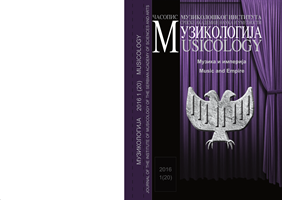Playing with Anthems: the Formation of the Cult of Empress Elisabeth in Hungarian Music
Playing with Anthems: the Formation of the Cult of Empress Elisabeth in Hungarian Music
Author(s): Ákos WindhagerSubject(s): Cultural history, Music, 19th Century, Sociology of Art, History of Art
Published by: Muzikološki institut SANU
Keywords: Empress Elisabeth; Sissi; Erzsébet; Franz Liszt; Hungarian cultural elite;
Summary/Abstract: In this paper I reveal how the cult of Empress Elisabeth affected the reception of three different volumes of Hungarian music. These three works are: Erzsébet-emlény (Elisabeth Memorial Album, 1854) edited by Kornél Ábrányi; Erzsébet (Elisabeth, 1854) opera by Károly Doppler, Ferenc Doppler and Ferenc Erkel; and Die Legende von der heiligen Elisabeth (The Legend of Saint Elisabeth, 1865) by Franz Liszt. In spite of their high artistic level, the first two works were banned by the cultural elite who interpreted them as Habsburgian political music after the downfall of the dual state. On the other hand, the intentionally apolitical oratorio by Franz Liszt was regarded by the same cultural elite as the highest standard of artistic representation of the Empress. As a consequence of parallel distribution of both imperially and nationally constructed memories, a strange diffusion appeared in the social sphere, especially in Hungarian cultural memory. Conflicting memories emerged due to the discrepancy between the original Hungarian political myth (Kossuth-myth) and Empress Elisabeth’s cult. Using the terminology introduced by Claude Lévi-Strauss, I have labeled this situation as the clash of the cold and hot society in Hungary during the 19th century.
Journal: Muzikologija
- Issue Year: 1/2016
- Issue No: 20
- Page Range: 31-51
- Page Count: 21
- Language: English

